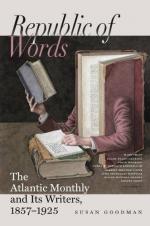Other leaders were appointed also. Monday Gell was the scribe of the enterprise; he was a native African, who had learned to read and write. He was by trade a harness-maker, working chiefly on his own account. He confessed that he had written a letter to President Boyer of the new black republic; “the letter was about the sufferings of the blacks, and to know if the people of St. Domingo would help them, if they made an effort to free themselves.” This epistle was sent by the black cook of a Northern schooner, and the envelope was addressed to a relative of the bearer.
Tom Russell was the armorer, and made pikes “on a very improved model,” the official report admits. Polydore Faber fitted the weapons with handles. Bacchus Hammett had charge of the firearms and ammunition, not as yet a laborious duty. William Garner and Mingo Harth were to lead the horse-company. Lot Forrester was the courier, and had done, no one ever knew how much, in the way of enlisting country negroes, of whom Ned Bennett was to take command when enlisted. Being the Governor’s servant, Ned was probably credited with some official experience. These were the officers: now for the plan of attack.
It was the custom then, as now, for the country negroes to flock largely into Charleston on Sunday. More than a thousand came, on ordinary occasions, and a far larger number might at any time make their appearance without exciting any suspicion. They gathered in, especially by water, from the opposite sides of Ashley and Cooper Rivers, and from the neighboring islands; and they came in a great number of canoes of various sizes,—many of which could carry a hundred men,—which were ordinarily employed in bringing agricultural products to the Charleston market. To get an approximate knowledge of the number, the city government once ordered the persons thus arriving to be counted,—and that during the progress of the trials, at a time when the negroes were rather fearful of coming into town,—and it was found, that, even then, there were more than five hundred visitors on a single Sunday. This fact, then, was the essential point in the plan of insurrection. Whole plantations were found to have been enlisted among the “candidates,” as they were termed; and it was proved that the city negroes who lived nearest the place of meeting had agreed to conceal these confederates in their houses to a large extent, on the night of the proposed outbreak.
The details of the plan, however, were not rashly committed to the mass of the confederates; they were known only to a few, and were finally to have been announced after the evening prayer-meetings on the appointed Sunday. But each leader had his own company enlisted, and his own work marked out. When the clock struck twelve, all were to move. Peter Poyas was to lead a party ordered to assemble at South Bay, and to be joined by a force from James’ Island; he was then to march up and seize the arsenal




